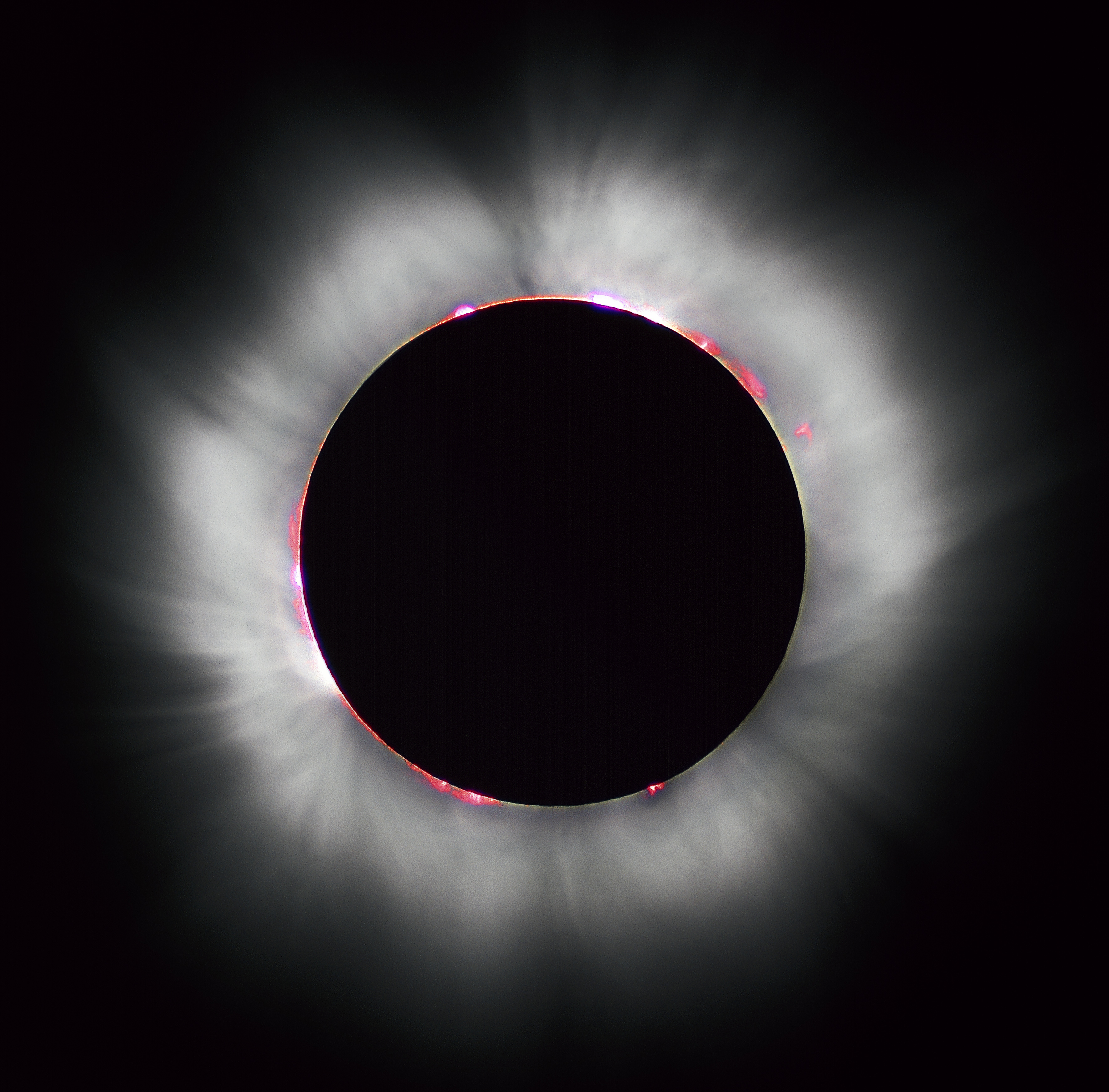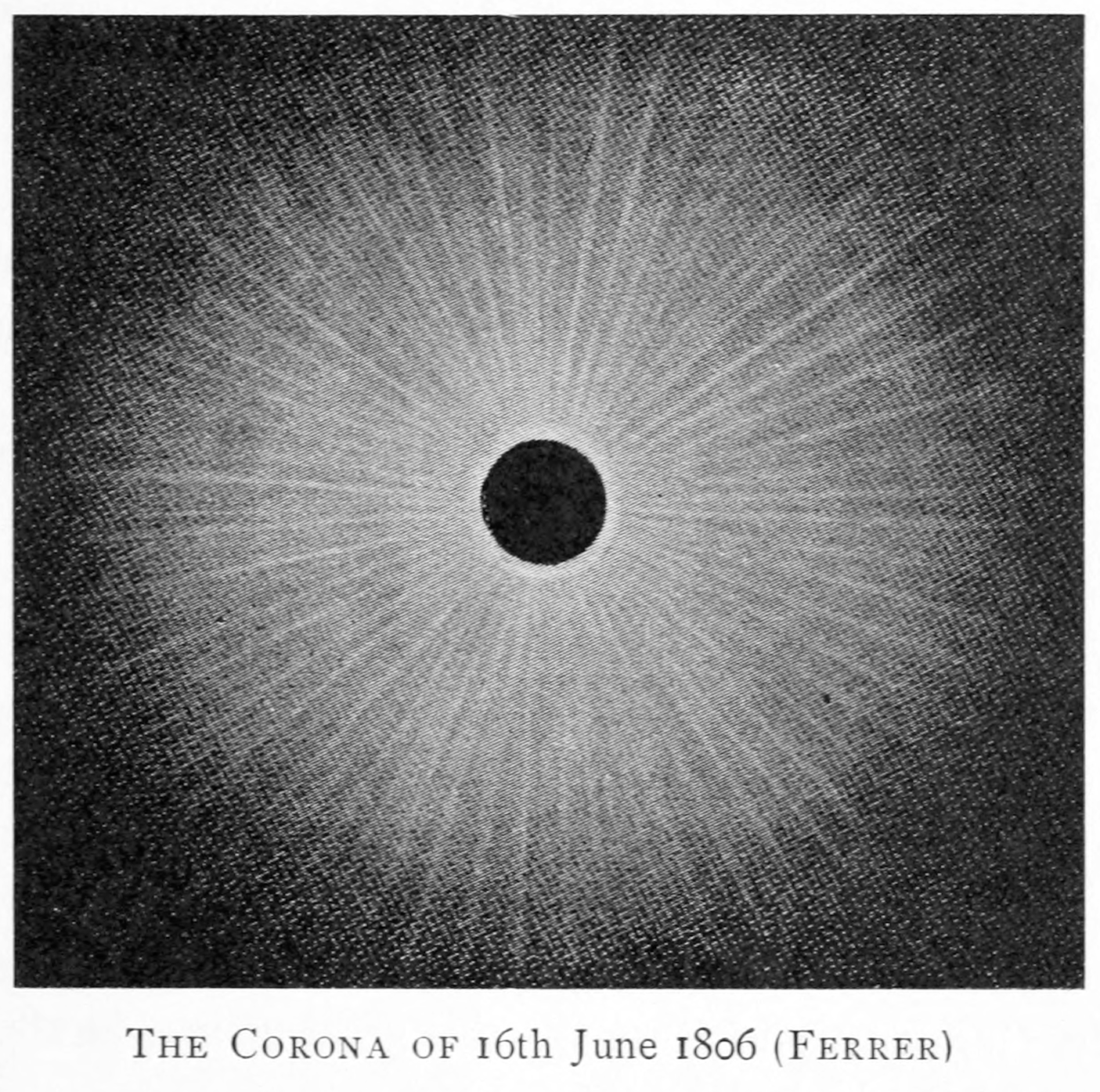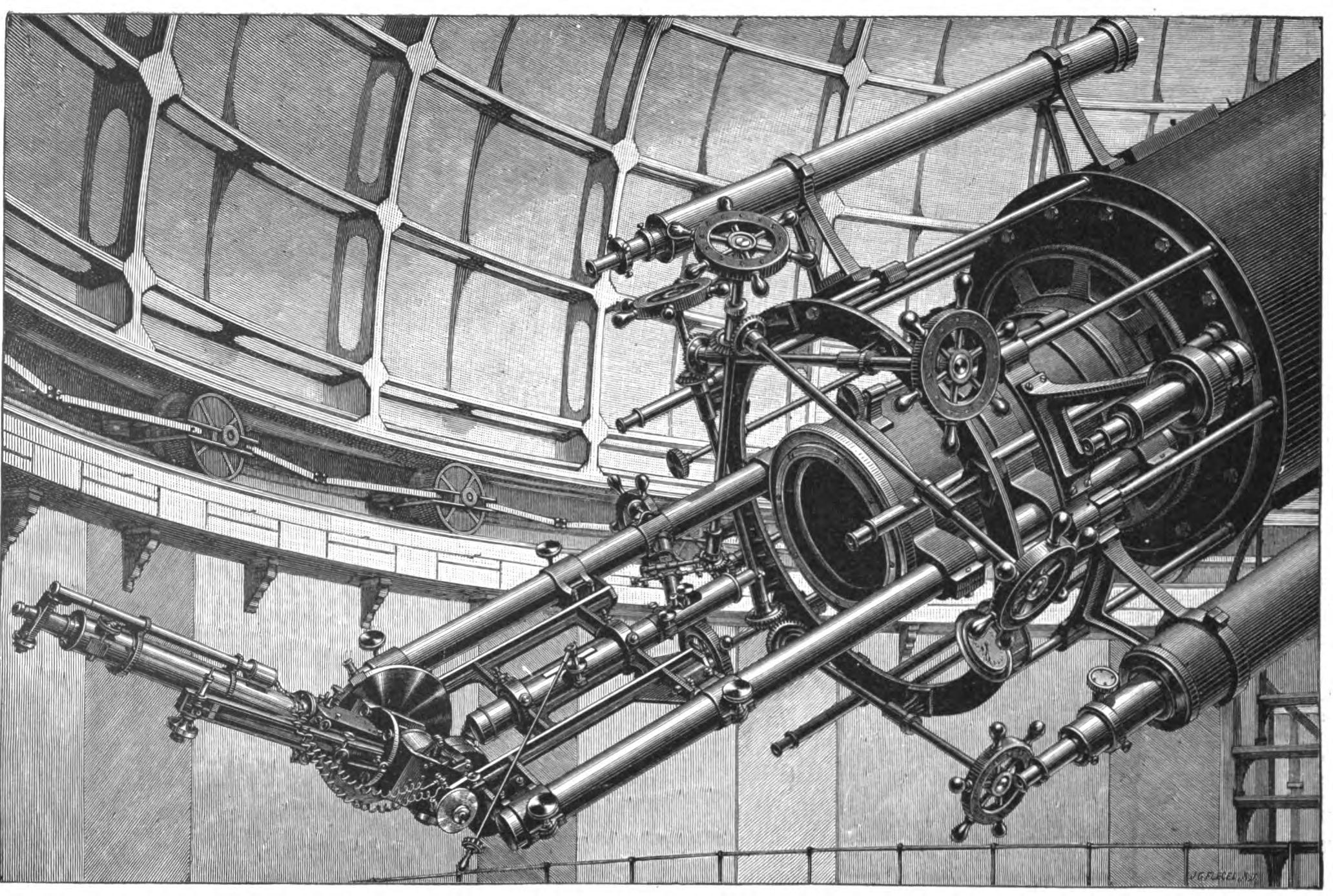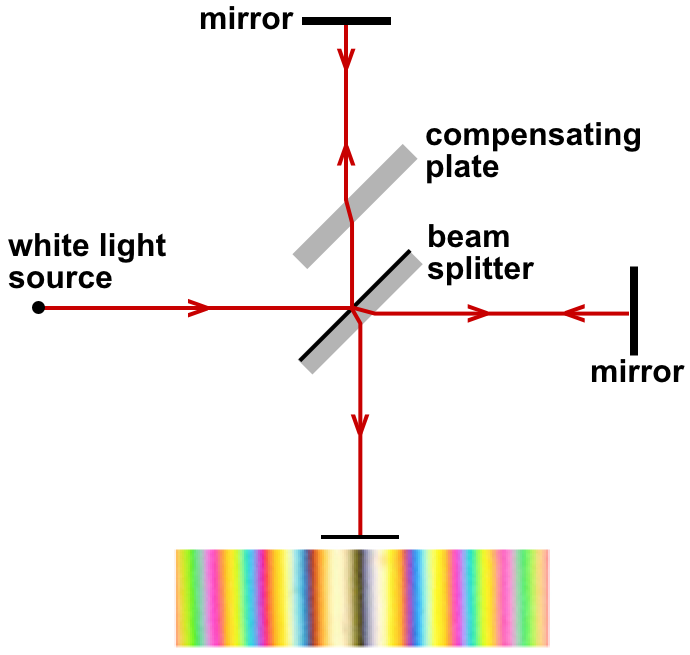|
Coronium
Coronium, also called newtonium, was the name of a suggested chemical element, hypothesised in the 19th century. The name, inspired by the solar corona, was given by Gruenwald in 1887. A new atomic thin green line in the solar corona was then considered to be emitted by a new element unlike anything else seen under laboratory conditions. It was later determined to be emitted by iron (Fe13+), so highly ionized that it was at that time impossible to produce in a laboratory. Solar spectroscopy During the total solar eclipse of 7 August 1869, a green emission line of wavelength 530.3 nm was independently observed by Charles Augustus Young (1834–1908) and William Harkness (1837–1903) in the coronal spectrum. Since this line did not correspond to that of any known material, it was proposed that it was due to an unknown element, provisionally named ''coronium''. The supposed element was discovered also in the gases given off by Mount Vesuvius in 1898 by a team of ... [...More Info...] [...Related Items...] OR: [Wikipedia] [Google] [Baidu] |
Solar Corona
A corona ( coronas or coronae) is the outermost layer of a star's atmosphere. It consists of plasma. The Sun's corona lies above the chromosphere and extends millions of kilometres into outer space. It is most easily seen during a total solar eclipse, but it is also observable with a coronagraph. Spectroscopic measurements indicate strong ionization in the corona and a plasma temperature in excess of , much hotter than the surface of the Sun, known as the photosphere. The word ''corona'' is , in turn derived . History In 1724, French-Italian astronomer Giacomo F. Maraldi recognized that the aura visible during a solar eclipse belongs to the Sun, not to the Moon. In 1809, Spanish astronomer José Joaquín de Ferrer coined the term 'corona'. Based in his own observations of the 1806 solar eclipse at Kinderhook (New York), de Ferrer also proposed that the corona was part of the Sun and not of the Moon. English astronomer Norman Lockyer identified the first element unknow ... [...More Info...] [...Related Items...] OR: [Wikipedia] [Google] [Baidu] |
Dmitri Mendeleev
Dmitri Ivanovich Mendeleev (sometimes transliterated as Mendeleyev or Mendeleef) ( ; russian: links=no, Дмитрий Иванович Менделеев, tr. , ; 8 February O.S. 27 January">Old_Style_and_New_Style_dates.html" ;"title="nowiki/>Old Style and New Style dates">O.S. 27 January18342 February [O.S. 20 January] 1907) was a Russian chemist and inventor. He is best known for formulating the Periodic Law and creating a version of the periodic table, periodic table of elements. He used the Periodic Law not only to correct the then-accepted properties of some known elements, such as the valence and atomic weight of uranium, but also to predict the properties of three elements that were yet to be discovered. Early life Mendeleev was born in the village of Verkhnie Aremzyani, near Tobolsk in Siberia, to (1783–1847) and Maria Dmitrievna Mendeleeva ( née Kornilieva) (1793–1850).''Maria Mendeleeva (1951)''. D. I. Mendeleev's Archive: Autobiographical Writings. Col ... [...More Info...] [...Related Items...] OR: [Wikipedia] [Google] [Baidu] |
Astronomical Spectroscopy
Astronomical spectroscopy is the study of astronomy using the techniques of spectroscopy to measure the spectrum of electromagnetic radiation, including visible light, ultraviolet, X-ray, infrared and radio waves that radiate from stars and other celestial objects. A stellar spectrum can reveal many properties of stars, such as their chemical composition, temperature, density, mass, distance and luminosity. Spectroscopy can show the velocity of motion towards or away from the observer by measuring the Doppler shift. Spectroscopy is also used to study the physical properties of many other types of celestial objects such as planets, nebulae, galaxies, and active galactic nuclei. Background Astronomical spectroscopy is used to measure three major bands of radiation in the electromagnetic spectrum: visible light, radio waves, and X-rays. While all spectroscopy looks at specific bands of the spectrum, different methods are required to acquire the signal depending on the frequency. ... [...More Info...] [...Related Items...] OR: [Wikipedia] [Google] [Baidu] |
Bengt Edlén
Bengt Edlén (2 November 1906, Gusum – 10 February 1993, Lund) was a Swedish professor of physics and astronomer who specialized in spectroscopy. He was the first who identified the unknown coronal spectral lines in the Corona, which was used to calculate the temperature of the corona. Biography Bengt Edlén was born on 2 November 1906 in Gusum, Sweden. He graduated from high school in Norrköping in 1926 and entered the University of Uppsala the same year. He was awarded his bachelor's degree after three semester and graduated with a PhD in 1934 with his thesis about the spectra and energy of the elements in the beginning of the periodic system. He received international fame after finding unidentified spectral lines in the Sun's spectrum which were speculatively believed to originate from a hitherto unidentified chemical element termed coronium. Edlén later showed that those lines are from multiply ionized iron (Fe-XIV). His discovery was not immediately accepted, sin ... [...More Info...] [...Related Items...] OR: [Wikipedia] [Google] [Baidu] |
Walter Grotrian
Walter Robert Wilhelm Grotrian (21 April 1890 in Aachen; † 3 March 1954 in Potsdam) was a German astronomer and astrophysicist. Grotrian studied the emission line from the solar corona in the green region of the spectrum; this emission line could not be attributed to any known chemical element and was thought to be a new element (which scientists named "coronium"). Grotrian and Bengt Edlén from Sweden demonstrated that the two observed emission lines arise from iron atoms that have lost about half their 26 electrons. Named after Grotrian *The impact crater Grotrian on the[...More Info...] [...Related Items...] OR: [Wikipedia] [Google] [Baidu] |
Solar Eclipse 1999 4
Solar may refer to: Astronomy * Of or relating to the Sun ** Solar telescope, a special purpose telescope used to observe the Sun ** A device that utilizes solar energy (e.g. "solar panels") ** Solar calendar, a calendar whose dates indicate the position of the Earth on its revolution around the Sun * Solar Maximum Mission, a satellite * SOLAR (ISS), an observatory on International Space Station Music * "Solar" (composition), attributed to Miles Davis * ''Solar'' (Red Garland album), 1962 * ''Solar'' (Taeyang album), 2010 * ''Solar'', a 2011 album by Rubik * "Solar", a song by Northlane from ''Mesmer'', 2017 * SOLAR Records, a record label Geography * Solar (Spanish term), a type of urban site * Solar, County Antrim, Northern Ireland, United Kingdom * Solar, Erode, India * Solar, Iran, Iran Companies * Solar Entertainment Corporation, a Philippines television and radio media company * Solar TV, a former TV channel * Solar Television Network, Inc., a former name of ... [...More Info...] [...Related Items...] OR: [Wikipedia] [Google] [Baidu] |
Spectroscopy
Spectroscopy is the field of study that measures and interprets the electromagnetic spectra that result from the interaction between electromagnetic radiation and matter as a function of the wavelength or frequency of the radiation. Matter waves and acoustic waves can also be considered forms of radiative energy, and recently gravitational waves have been associated with a spectral signature in the context of the Laser Interferometer Gravitational-Wave Observatory (LIGO) In simpler terms, spectroscopy is the precise study of color as generalized from visible light to all bands of the electromagnetic spectrum. Historically, spectroscopy originated as the study of the wavelength dependence of the absorption by gas phase matter of visible light dispersed by a prism. Spectroscopy, primarily in the electromagnetic spectrum, is a fundamental exploratory tool in the fields of astronomy, chemistry, materials science, and physics, allowing the composition, physical structure an ... [...More Info...] [...Related Items...] OR: [Wikipedia] [Google] [Baidu] |
Nebulium
Nebulium was a proposed element found in astronomical observation of a nebula by William Huggins in 1864. The strong green emission lines of the Cat's Eye Nebula, discovered using spectroscopy, led to the postulation that an as yet unknown element was responsible for this emission. In 1927, Ira Sprague Bowen showed that the lines are emitted by doubly ionized oxygen (O2+), and no new element was necessary to explain them. History William Hyde Wollaston in 1802 and Joseph von Fraunhofer in 1814 described the dark lines within the solar spectrum. Later, Gustav Kirchhoff explained the lines by atomic absorption or emission, which allowed the lines to be used for the identification of chemical elements. In the early days of telescopic astronomy, the word nebula was used to describe any fuzzy patch of light that did not look like a star. Many of these, such as the Andromeda Nebula, had spectra that looked like stellar spectra, and these turned out to be galaxies. Others, such as ... [...More Info...] [...Related Items...] OR: [Wikipedia] [Google] [Baidu] |
Helium
Helium (from el, ἥλιος, helios, lit=sun) is a chemical element with the symbol He and atomic number 2. It is a colorless, odorless, tasteless, non-toxic, inert, monatomic gas and the first in the noble gas group in the periodic table. Its boiling and melting point are the lowest among all the elements. It is the second lightest and second most abundant element in the observable universe (hydrogen is the lightest and most abundant). It is present at about 24% of the total elemental mass, which is more than 12 times the mass of all the heavier elements combined. Its abundance is similar to this in both the Sun and in Jupiter, due to the very high nuclear binding energy (per nucleon) of helium-4, with respect to the next three elements after helium. This helium-4 binding energy also accounts for why it is a product of both nuclear fusion and radioactive decay. The most common isotope of helium in the universe is helium-4, the vast majority of which was formed during t ... [...More Info...] [...Related Items...] OR: [Wikipedia] [Google] [Baidu] |
Nickel
Nickel is a chemical element with symbol Ni and atomic number 28. It is a silvery-white lustrous metal with a slight golden tinge. Nickel is a hard and ductile transition metal. Pure nickel is chemically reactive but large pieces are slow to react with air under standard conditions because a passivation layer of nickel oxide forms on the surface that prevents further corrosion. Even so, pure native nickel is found in Earth's crust only in tiny amounts, usually in ultramafic rocks, and in the interiors of larger nickel–iron meteorites that were not exposed to oxygen when outside Earth's atmosphere. Meteoric nickel is found in combination with iron, a reflection of the origin of those elements as major end products of supernova nucleosynthesis. An iron–nickel mixture is thought to compose Earth's outer and inner cores. Use of nickel (as natural meteoric nickel–iron alloy) has been traced as far back as 3500 BCE. Nickel was first isolated and classified a ... [...More Info...] [...Related Items...] OR: [Wikipedia] [Google] [Baidu] |
Highly Charged Ion
Highly charged ions (HCI) are ions in very high charge states due to the loss of many or most of their bound electrons by energetic collisions or high-energy photon absorption. Examples are 13-fold ionized iron, or Fe XIV in spectroscopic notation, found in the Sun's corona, or ''naked'' uranium, (U XCIII in spectroscopic notation), bare all bound electrons, which requires very high energy for its production. HCI are found in stellar corona, in active galactic nuclei, in supernova remnants, and in accretion disks. Most of the visible matter found in the universe consists of highly charged ions. High temperature plasmas used for nuclear fusion energy research also contain HCI generated by the plasma-wall interaction (see Tokamak). In the laboratory, HCI are investigated by means of heavy ion particle accelerators and electron beam ion traps. They might have applications in improving atomic clocks, advances in quantum computing Quantum computing is a type of computation whose ... [...More Info...] [...Related Items...] OR: [Wikipedia] [Google] [Baidu] |
Luminiferous Aether
Luminiferous aether or ether ("luminiferous", meaning "light-bearing") was the postulated medium for the propagation of light. It was invoked to explain the ability of the apparently wave-based light to propagate through empty space (a vacuum), something that waves should not be able to do. The assumption of a spatial plenum of luminiferous aether, rather than a spatial vacuum, provided the theoretical medium that was required by wave theories of light. The aether hypothesis was the topic of considerable debate throughout its history, as it required the existence of an invisible and infinite material with no interaction with physical objects. As the nature of light was explored, especially in the 19th century, the physical qualities required of an aether became increasingly contradictory. By the late 1800s, the existence of the aether was being questioned, although there was no physical theory to replace it. The negative outcome of the Michelson–Morley experiment (1887) suggest ... [...More Info...] [...Related Items...] OR: [Wikipedia] [Google] [Baidu] |










